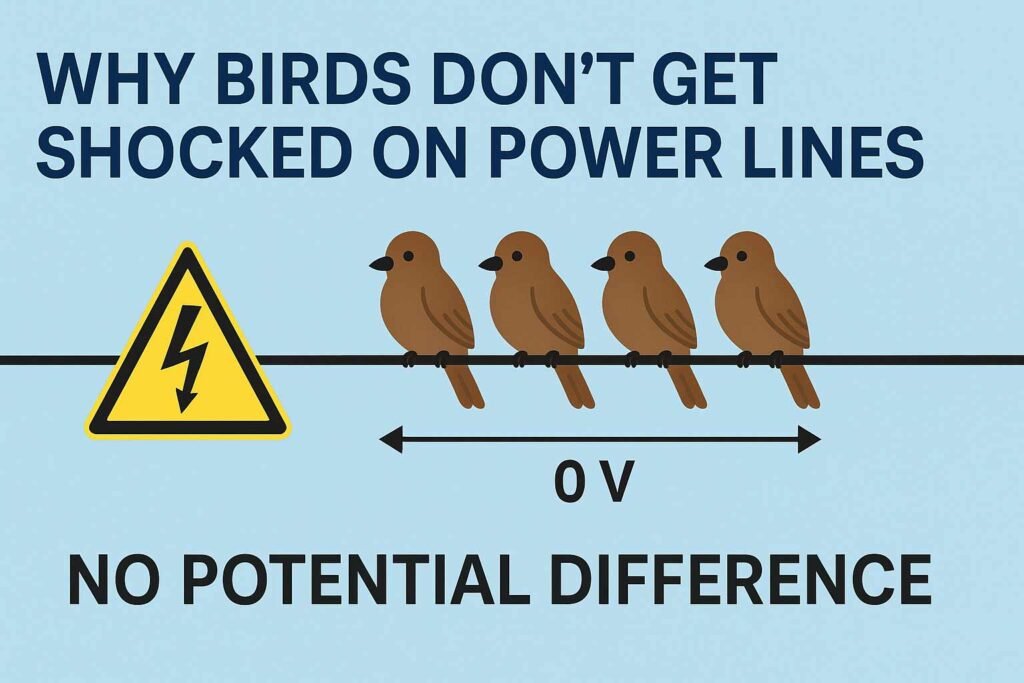Ever seen a bird perched on a power line, calm and unbothered by the thousands of volts flowing just inches beneath its feet? If a human touched that same line, it could be fatal. So, why don’t birds get electrocuted?
Let’s explore this fascinating question using simple principles of electrical engineering.
The Secret: No Voltage Difference
Electricity always looks for a path to flow from a higher voltage to a lower one—just like water flows from high to low ground.
When a bird lands on a single power line, both of its feet are at the same voltage. This means there’s no voltage difference across its body, and therefore no current flows through it.
No voltage difference = no current = no shock.

Why Current Matters More Than Voltage
In electrical engineering, voltage is the potential, but current is the killer. It’s the flow of current through the body that causes electrocution—not just being near high voltage.
So, if a bird only touches one wire, there’s nowhere for the current to go. It just sits there safely.
But things change dramatically if the bird were to touch two wires with different voltages—or a wire and a grounded structure (like a pole). That would complete a circuit, allowing current to flow through the bird’s body. That’s when electrocution happens.
What If a Human Touches the Wire?
If a human touches a power line while standing on the ground or a pole, the body becomes part of the circuit. The electricity sees a path—from the wire, through the person, down to the ground. That’s why linemen use insulated tools, rubber gloves, and sometimes even helicopters to avoid becoming grounded.
Why Are Power Lines So Dangerous Then?
Voltage Levels
Because of the high voltage and high current. Birds are only safe because they don’t complete the circuit. Humans, however, often do—especially if they’re touching the ground or two different points of different potential.
Large Birds with Narrow Power Lines
Also, not all birds are safe. Larger birds, like eagles, with wider wingspans can sometimes touch two lines at once. Sadly, that does lead to electrocution in some cases.
Engineers Consider Birds Too
Did you know that utility companies install bird guards, perching deterrents, and insulating covers on some lines and equipment? These steps not only protect the birds—but also help prevent power outages caused by short circuits when large birds complete an unintended path.
In Summary
- Birds don’t get electrocuted because they only touch one wire, so no current flows.
- Electricity needs a complete path to flow—from high voltage to low.
- Touching two different voltages or grounding yourself is what causes shock.
- Electrical engineers design systems that consider both safety and wildlife protection.